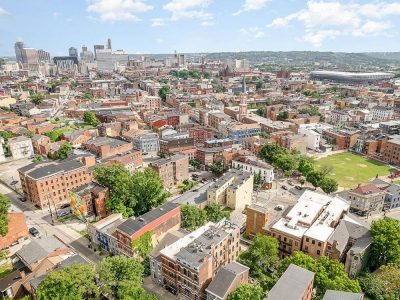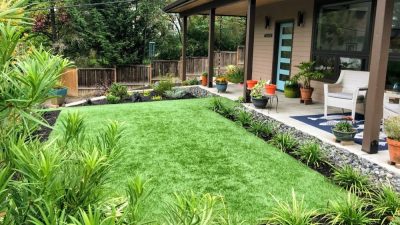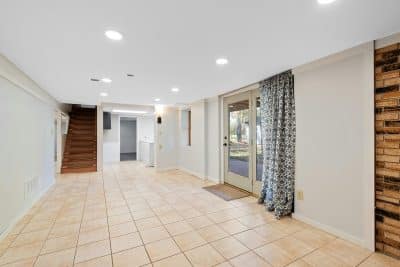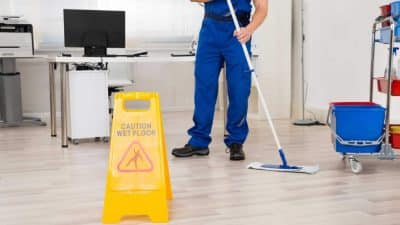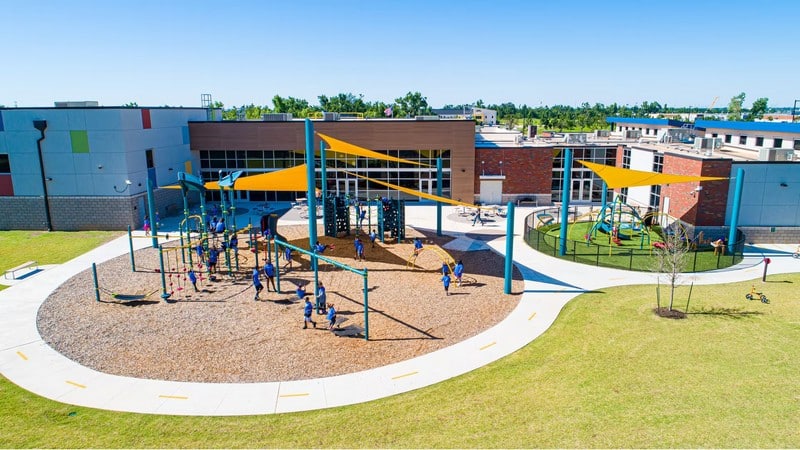
Gone are the days of the playground as a simple space for recreation. A few swings, a slide, and a ladder or parallel bars were once all there was to the school yard. But too many children have grown sedentary, and many traditional playgrounds were genuinely unsafe. Today, new playground design trends are addressing many, if not all, of the issues schools have faced for generations. Here are some of the playground design trends transforming school campuses.
The Metal Swing Shift
The Problem: Anyone who’s spent time on a blacktop knows about the metal swings that dot the playground. They’ve been a staple forever. Sadly, however, many campuses have faced significant challenges with these swing designs. Children have been injured by loose joints, improperly constructed seats, and even rust. Of course, administrators worry about the liabilities that come with these older swing sets. They also hope to see a level of inclusivity that classic metal swings can’t offer.
The Solution: Today’s metal swing sets are now more durable, safe, and accessible. Playground manufacturers are using materials that are weather-resistant, so kids don’t have to deal with rust and broken-down parts. You’re also likely to see better surfaces beneath the swings, so that when kids inevitably fall, they are less prone to injuries. Plus, most new playgrounds now also include adjustable and inclusive swing seats, so children of all abilities can play.
Inclusivity Is the New Black
The Problem: You thought orange was the new black? Well, on the playground, inclusivity is the new black. For far too long, traditional playgrounds left kids with different abilities sitting alone, isolated, and left out. The steps were too steep, the pathways were too narrow, and the equipment only accommodated certain kids. This meant that many children were unable to fully engage both their faculties and their peers.
The Solution: Modern, inclusive playground designs now address the full range of abilities. With ramps, sensory play stations, and more ground-level activities, all kids can participate. Plus, tactile surfaces and musical play elements offer stimulation for the sensory needs of a wide variety of kids. Now, schools can promote empathy, cooperation, and diversity on their blacktops, thanks to playgrounds that prioritize inclusivity.
Playgrounds: Modern Surfaces and Safe Structures
The Problem: If you grew up as part of Generation X or older, you may remember tall, hot metal slides and wooden structures rife with splinters. So many injuries came as a result of these older playgrounds that the internet now has dozens of memes about them. That’s not even to mention the hard concrete surfaces and potholes in grassy fields that contributed to scraped knees and twisted ankles for generations.
The Solution: Fortunately, schools today are balancing the need for fun with the importance of safety. Today’s playgrounds have modern surfaces like poured-in-place rubber and engineered wood fiber. They absorb impact, which can help minimize kids’ injuries. You’ll also see more hard plastic slides that don’t get so hot under the sun, and shade protection, so kids won’t melt in the late spring or early fall heat. Schools investing in these modern designs show parents that they prioritize students’ well-being.
The Active Play Zone for Health and Wellness
The Problem: Obesity rates are an undeniable problem for school-aged children, and older playgrounds did little to address this issue. Sedentary behavior is a leading cause for this shift, and parents and educators have long considered how to address it. Traditional playgrounds only focused on a small range of activities, so kids who were uninterested in those tended to sit and do nothing during their breaks. This inactivity throughout the day meant kids missed out on the physical and mental health benefits of active play.
The Solution: Now, however, many schools around the country are creating active play zones with modern playgrounds at the center. You’ll see more challenging structures, obstacle tracks, rope courses, and more. Plus, educators are now putting out hula hoops, jump ropes, and a variety of balls for kids to engage in games together. By incorporating all these elements, schools are transforming recess into dedicated exercise time that promotes healthy lifestyle habits.
Outdoor Classrooms Take Learning Outside
The Problem: For decades, playgrounds served as purely recreational spaces. If kids learned anything at an academic level, it was a happy bonus. However, now concerns have risen over increased screen time and a lack of connection to nature. Outdoor time has been cut short in many schools in order to prioritize tests and other in-class academics. Fortunately, educators are realizing they must balance play with learning.
The Solution: Today, outdoor classrooms abound. More schools are integrating learning into the playground experience, and vice versa, allowing for more outside time and movement for kids while maintaining the learning experience. You’ll see interactive STEM installations like weather stations and community gardens and outdoor seating for theaters and demonstrations. Schools that adopt this trend have seen enriched academic outcomes and a healthier relationship between students and the environment.
In the end, playground design has fortunately evolved beyond just swings and slides. These innovations have made it clear that the playground is no longer just an “extra space” for kids to kill time. They’re integral to children’s well-being, both physical and mental. By embracing modern trends and investing in new facilities, schools show that they place a high value on the future of every student who skips along the blacktop.




